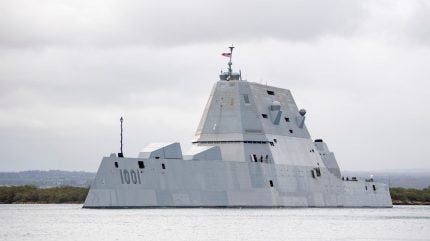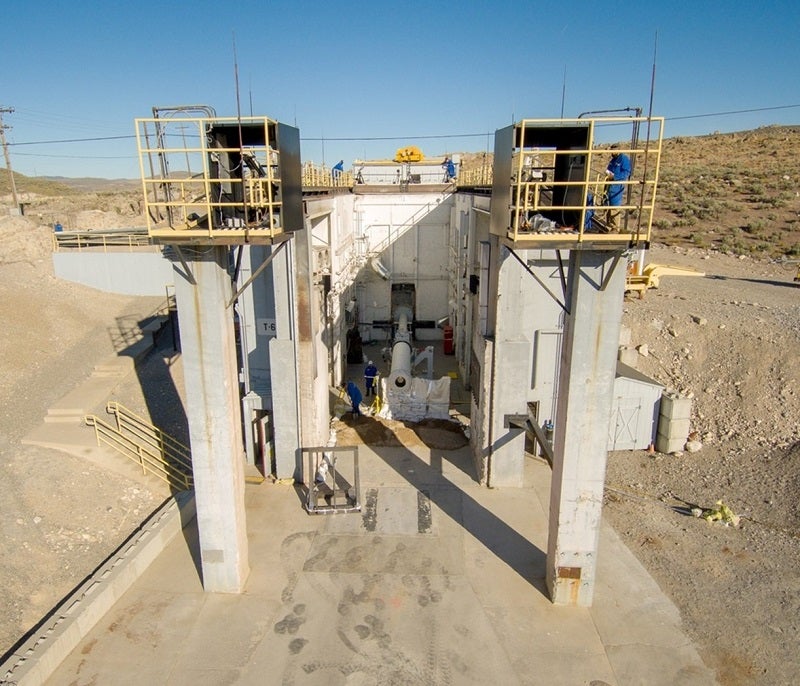
General Dynamics Bath Iron Works (BIW) will procure long lead time material for the launch module of the large vertical launch system (VLS) onboard the guided missile destroyer, USS Michael Monsoor (DDG 1001).
The US Department of Defense (DoD) allocated $23m funds to the contractor on 10 July 2024; the work is due to be complete by April 2026.

Discover B2B Marketing That Performs
Combine business intelligence and editorial excellence to reach engaged professionals across 36 leading media platforms.
DDG 1001 is the second of three US Navy Zumwalt-class destroyers. The vessels measure 610 feet (ft) in length and have an 80.7ft beam. They have a displacement of 15,997 tonnes with a sustained speed of 30 knots.
Among a group of preeminent American defence manufacturers developing the class, BIW serves as the main builder of the vessels. Other major subcontractors include Lockheed Martin, BAE Systems Land and Armaments and Boeing.
Zumwalt fleet decked for hypersonics
Construction of the Michael Monsoor began in 2008 and she was eventually commissioned in October 2016. Since then, however, the Navy plans to optimise the three ships for conducting surface strike missions, because their priorities have shifted to outmatching China’s seaborne missile capabilities in a prospective conflict over Taiwan.
This will involve removing the two 155-millimetre guns on each ship along with their associated below-deck equipment, and replace it all with large-diameter vertical launch tubes capable of storing and firing an innovative weapon system called the conventional prompt strike missile (CPS).

US Tariffs are shifting - will you react or anticipate?
Don’t let policy changes catch you off guard. Stay proactive with real-time data and expert analysis.
By GlobalDataThe CPS system is a boost-glide missile that can manoeuvre and glide at hypersonic speeds above Mach 5, or five times the speed of sound. The Navy aims to have the first CPS-equipped Zumwalt vessel ready for testing by 2025.

Existing missiles onboard include the tactical Tomahawk, standard missile-3, and the evolved Sea Sparrow missile for air defence.
Each warship is reported to be equipped with four of the large-diameter tubes, with each tube capable of holding three CPS missiles, for a total of 12 CPS missiles per ship.
According to a DoD briefing in March on the FY2025 Defense Budget Overview, the US hopes to procure ten “long-range hypersonic weapon missiles” next fiscal year and conduct an end-to-end flight test at the end of 2024.
Plans for DDG 1001 VLS this year
The DoD has already begun to implement its plans to evolve the Zumwalt combatant this year.
In April, HII’s Mission Technologies division secured a $74m contract to research, analyse, and develop capabilities to install both the Mk 41 and Mk 57 VLS onboard DDG 1001.
The Mk 57 unit, developed by HII, allows the firing of any naval missile from any VLS cell on Zumwalt-class ships.
At the end of June, the DoD awarded Lockheed Martin a contract modification worth $534m to support the engineering, development and testing of the CPS missiles. Work under this undefinitised contract is expected to be completed on 19 June 2025.
Lockheed Martin originally secured a contract exceeding $2bn in value from the Navy to deploy the CPS weapon system on Zumwalt destroyers in February 2023. It will supply launcher systems, weapon control and all-up rounds, and provide platform integration support for the naval platform.



